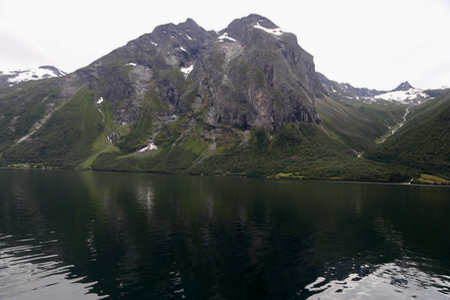Hoemtinden
- Hoemtinden
- 1734 m.
- Primary factor 804m (or 164m, see Hauduken)
- Near Eikesdalsvatnet
- Location: North: 62.54979, East: 008.11362 (GPS on the summit)
- Climbed August 11. 2017,
- Note: Hoemtinden and Hauduken are both 1734m,
one will have prominence 804m, the other 164m.
|

|

